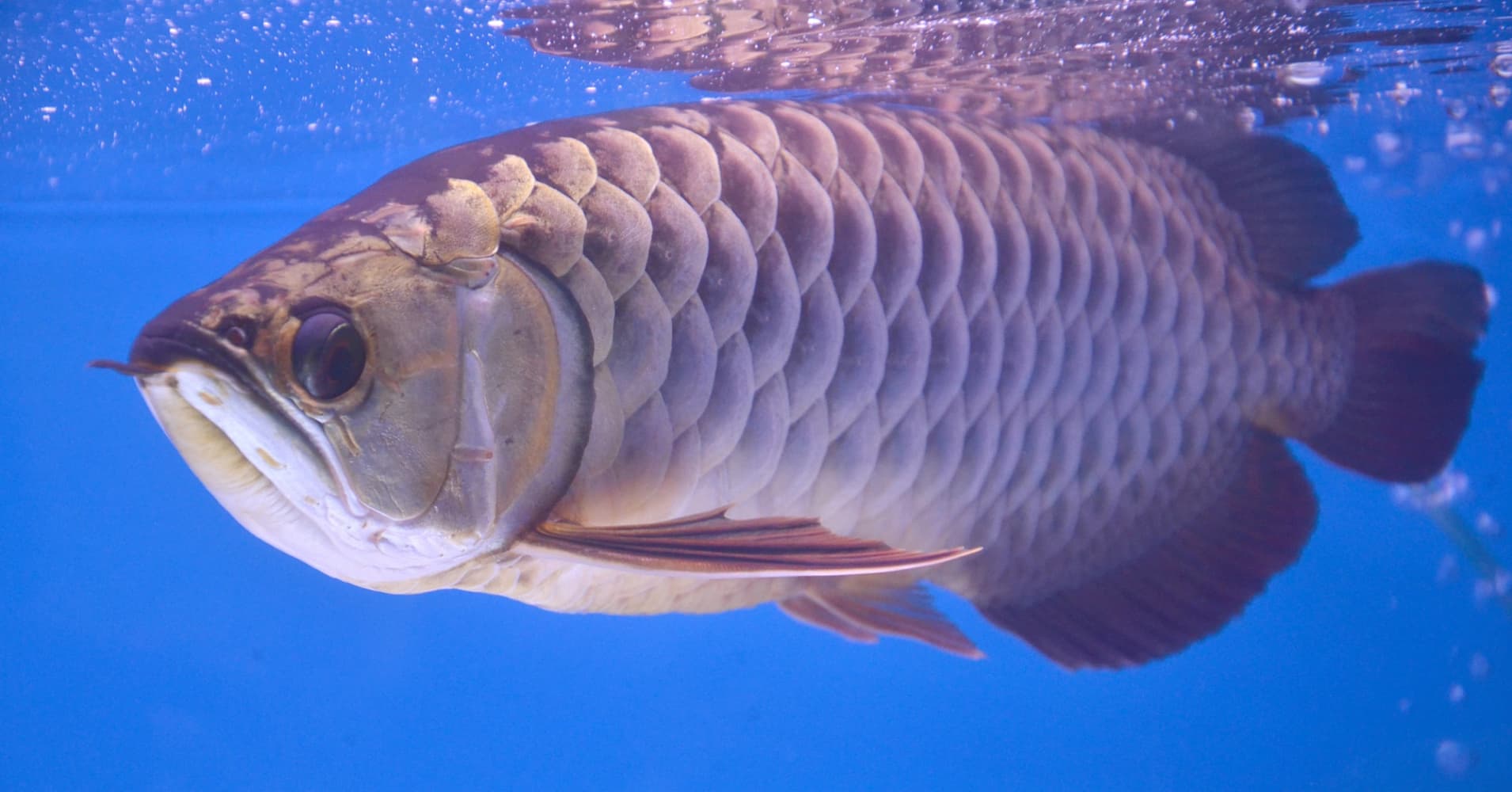
Yachts, jets and mansions are the usual signs of extreme wealth. But for the Asian elite, a rare exotic fish has become a coveted status symbol and all-around obsession.
Prized for its glimmering scales and sinuous body, the Asian arowana is one of the world's most expensive aquatic creatures, with some rumored to fetch up to $300,000. While not all are priced in the six figures, a young arowana in Singapore could go for $300, while rare adult white albinos could cost $70,000 or more.
Arowana, also known as "dragon fish," are not the typical pet fish. They are bred throughout South East Asia and can grow to be around three feet long (about the size of a snowshoe). Some owners are so enamored with the fish that they're splashing money on plastic surgery for the pets — $90 for an eyelift and $60 for a chin job.
Many even believe that the fish brings good luck and wealth. Tales abound of arowana sacrificing their lives to jump out of tanks and warn owners against bad business ventures and other dangers.
Protected by the Endangered Species Act, the Asian arowana is nearly depleted from the wild. In 1975, 183 countries signed a treaty classifying it as a rare species and banning the fish from international trade. To this day, it cannot legally be brought into the United States.
The treaty helped transform the fish into a luxury commodity. But as the arowana obsession grew, a thriving black market emerged along with an uptick in violence across certain cities. Singapore, which boasts one of the lowest crime rates, once experienced four arowana thefts in a single week. During one of those heists, the thief punched an elderly woman as he took off with her fish sloshing in a bucket.
In Malaysia, five arowana were reportedly stolen from a woman's house and in a separate incident, an aquarium owner was stabbed to death and almost beheaded over the fish. At fish beauty pageants, armed guards escort the rare breeds.
Restrictions were loosened in the late 1980s to allow the trade of farm-bred arowana whose parents were also born in captivity. Sales of captive-bred arowana flourished until the 2000s. But in 2012, prices fell substantially as breeders flooded the market. Singaporean breeders say that the price of red arowana has dropped by a third since then.
Demand is still high, however. According to the Convention on International Trade in Endangered Species, which tracks legal exports of arowana, more than 200,000 trades were recorded in 2016, three times more than in 2006. Most came from Indonesia or Malaysia and ended up in Chinese aquariums.
Like this story? Subscribe to CNBC Make It on YouTube!
Don't miss: This Indian billionaire is the world's richest sports team owner
via IFTTT
No comments:
Post a Comment